What Does Mochi Taste Like?
When you buy through our links, The Breslin may earn an affiliate commission. Learn more
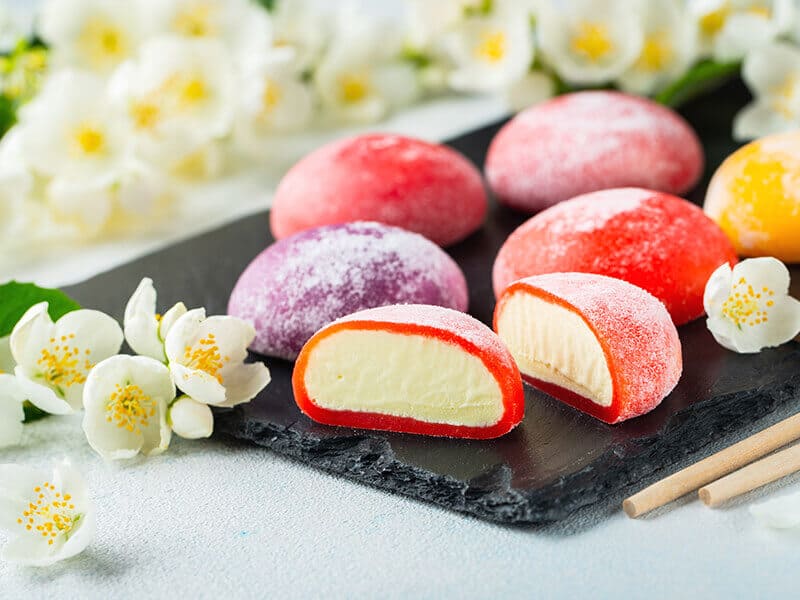
There are many various answers to the topic “What does mochi taste like” because mochi’s varieties are diverse, and they are made from different ingredients. It is complicated to find out the exact answer to the tricky question.
However, the appearance of this article will solve all problems and questions about the taste of mochi in the most accurate and detailed way. Besides the taste, you are also added with much other helpful knowledge. Take a careful look now!
The First Information About Mochi
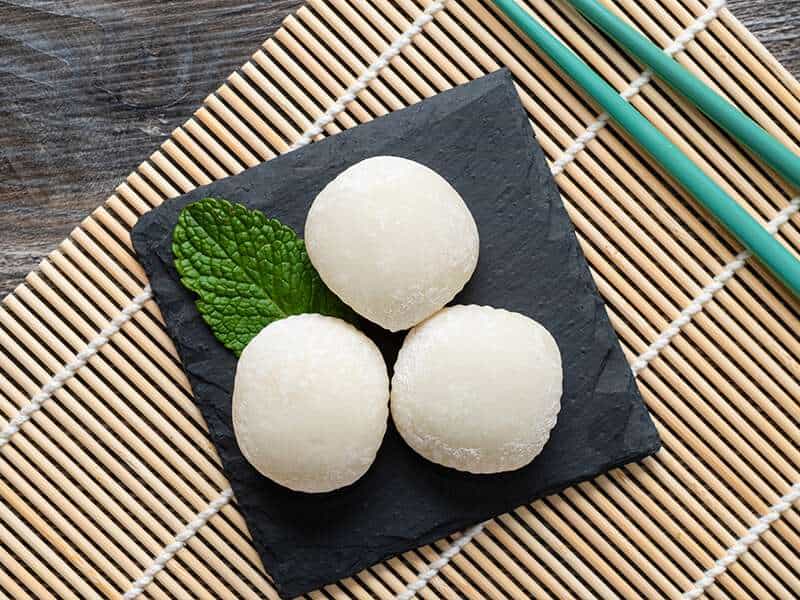
Mochi is a famous Japanese cake with rice as the main ingredient. Inside the mochi usually has a layer of filling. Mochi comes in different varieties with various components, so their taste and texture are also varied.
The pounding of rice plays an essential role in the mochi-making process. You can pound the rice with a mortar or cook the rice before pounding it. Rice needs to be pounded by hand to make the dough soft, chewy, and smooth.
There are many ways to prepare mochi. Methods like frying, baking, and grilling bring out the full flavor of mochi. Mochi is used in desserts, hotpots, and soups. In addition, it is also served with soy sauce, sesame seeds, salt flakes, and red bean paste.
Mochi is an important cake in Japanese life. It represents the Japanese wishes for good luck and health. Mochi often appears in festivals in Japan, and especially at New Years’ parties.
Taste And Feel The Flavor Of Mochi
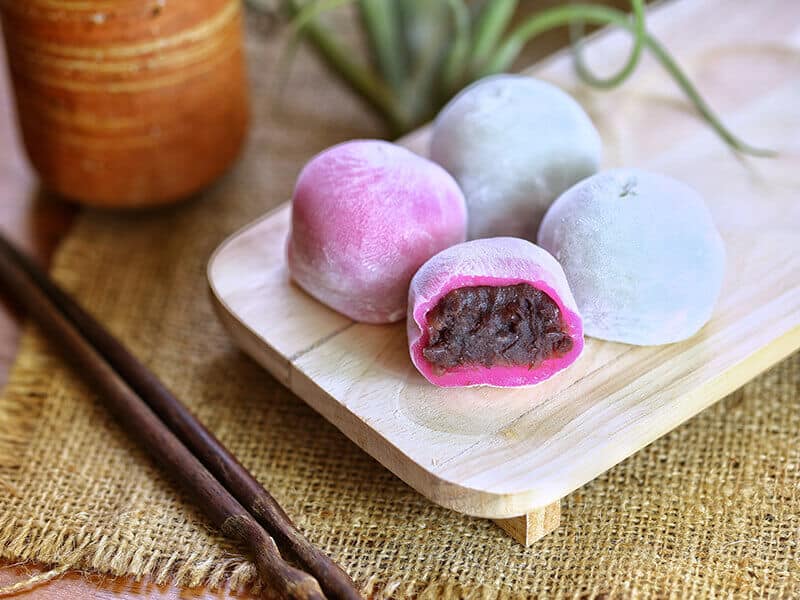
The color that you usually see of mochi is white. However, you will also come across mochi in green, purple, or pink colors. When you bite the mochi, you will feel its chewy, soft, elastic, smooth, and sticky texture.
Regarding the taste of mochi, its flavor is a combination of flavors of marshmallows, rice, and gummy candy. You can quickly feel the sweetness of mochi. The taste of mochi is pretty characteristic and varies depending on the ingredients used to make mochi filling.
You can feel the taste of green tea, sweeteners, or herbs when enjoying different types of mochi. The inner layer usually has a sweet taste in the form of bean paste or cream. In addition, there are also varieties of mochi made in savory flavor.
There are many different types of mochi, and they are made from a variety of components. So their taste and texture will also not be the same. Let’s explore the variety of types and flavors of mochi together.
1. Ume Daifuku
Ume daifuku is a famous mochi with a distinctive sweet and tart taste. The outside of the ume daifuku is covered with a layer of ume fruit. The soft red bean paste and ume fruit fillings create a pleasant feeling when enjoying this mochi in winter and spring.
Some essential things you need to know about ume daifuku will appear here.
2. Botamochi (Ohagi)
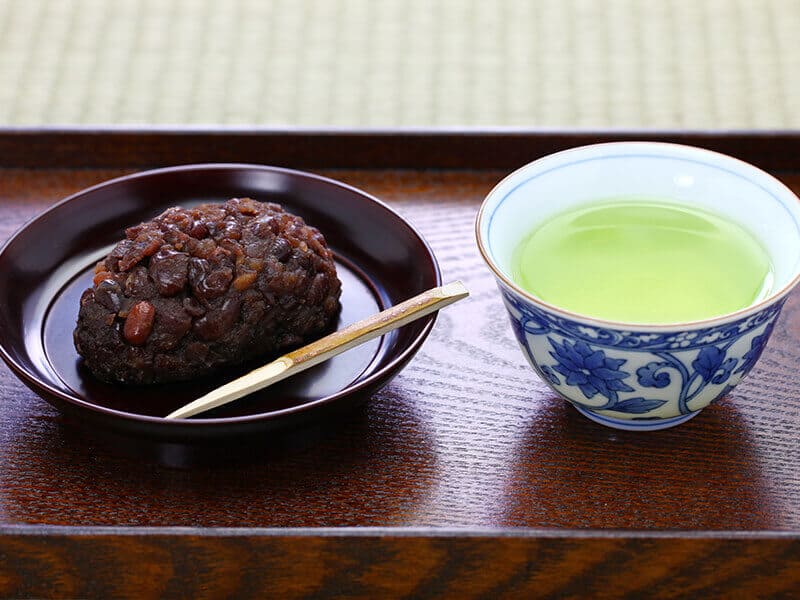
Bota is a famous mochi in Japan. It is made from glutinous rice. The outside is a soft and attractive azuki (red beans) paste layer. When you look at botamochi, you will think of peony flowers. The Japanese usually eat botamochi in the spring.
Follow the directions on making fantastic botamochi.
3. Coffee Daifuku
It is impressive to have a dessert with coffee daifuku. This is a type of mochi with a tough outer shell and a soft, creamy coffee paste filling. In some cases, you can combine cream with coffee to make the filling.
4. Kusa Mochi
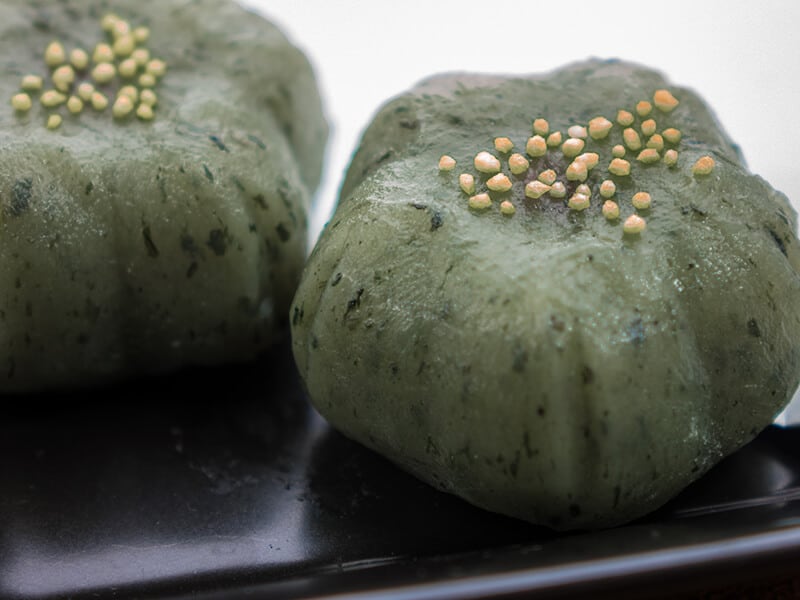
The distinctive and striking green color will make you easily impressed with kusa mochi. This type of mochi will bring a delicate taste to you when enjoying it. You can feel a hint of grassiness. Kusa mochi is usually filled with red bean paste.
5. Kuzumochi
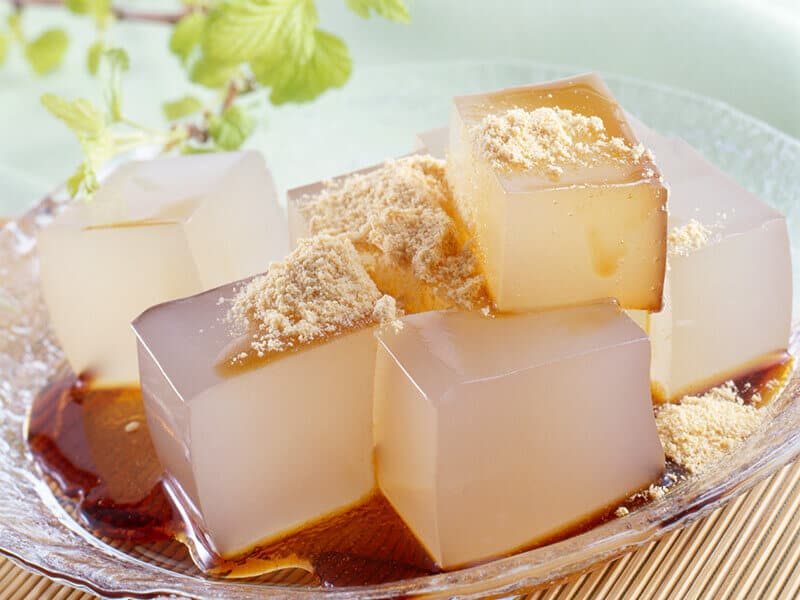
The main ingredient that makes up kuzumochi is flour. This powder is derived from the kuzu tree. This is a type of mochi with gelatinous and jelly-like texture and a rather pleasant taste. You can feel the sweetness of the syrup and the aroma of soy powder.
6. Warabimochi
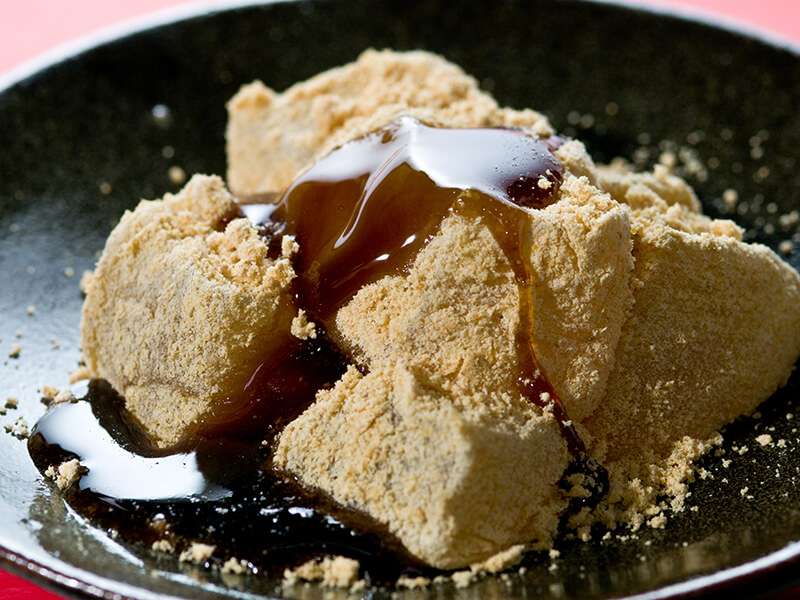
Warabimochi has a neutral flavor. Bracken starch plays an essential role in making warabimochi. You will easily feel the softness and chewiness when biting the warabimochi. The origin of the name warabi is from the bracken tree (warabi).
Watch this video to know more:
7. Sakura Mochi
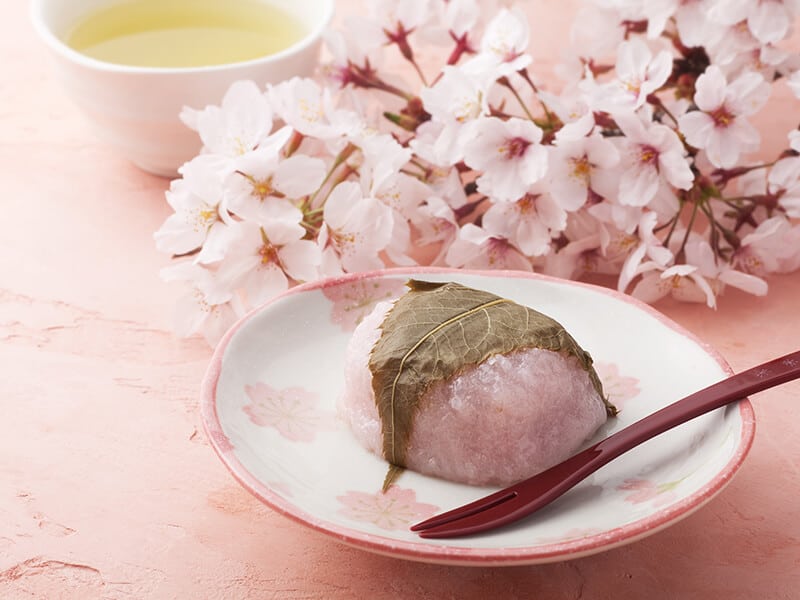
Sakura mochi was first created in 1717. This type of mochi is usually pink like cherry blossoms, so it has the name “sakura mochi” as in Japanese, “sakura” means “cherry blossom” This mochi has a sweet taste and is usually served in the spring.
8. Nama Yatsuhashi Mochi
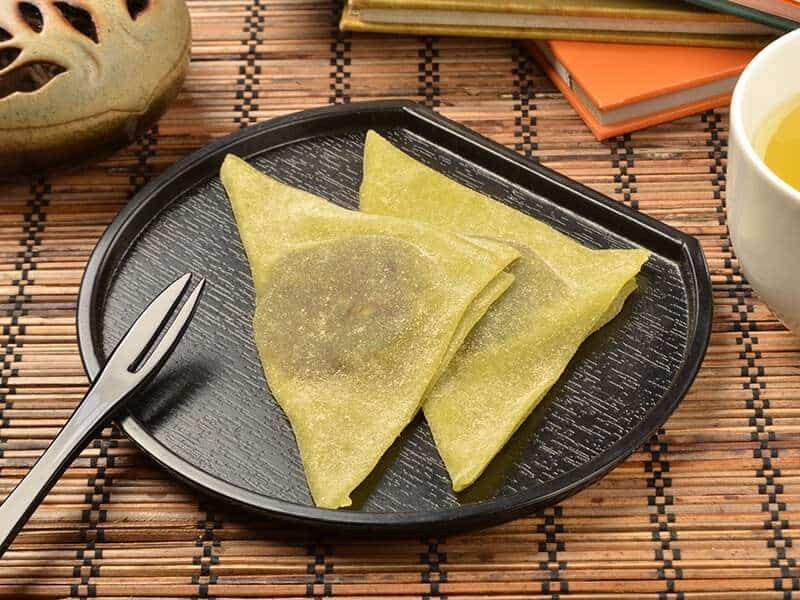
Yatsuhashi mochi is often eaten when drinking tea. This is a kind of mochi with a long history. Yatsuhashi mochi was first made in 1689 in the city of Kyoto (1). The crunchiness, sweetness, and cinnamon flavor of it will satisfy you.
9. Kurumi Mochi
I enjoyed the rich, sweet, and mildly salty taste of Kurumi mochi. It has been associated with Japanese culture for a long time. The outer layer of the walnut sauce gives the Kurumi mochi a rich, creamy, and walnut flavor.
10. Akafuku
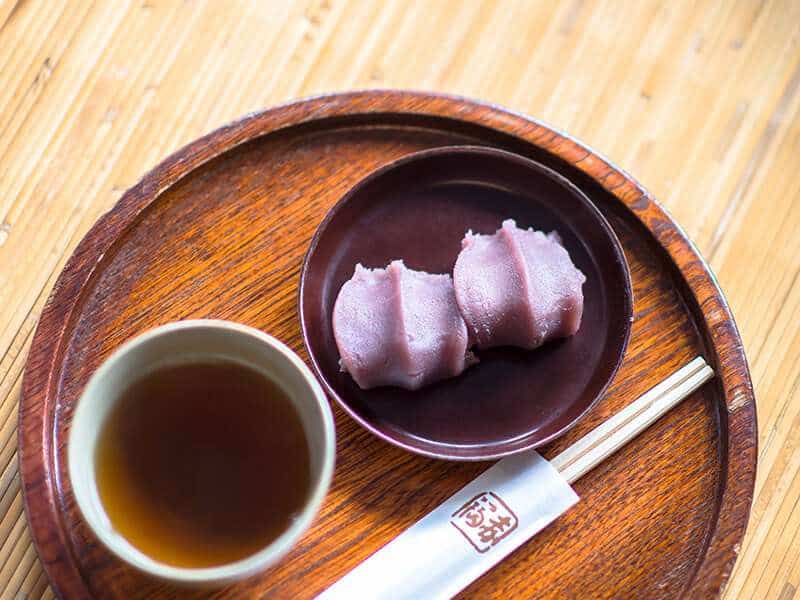
You can only find Akafuku mochi in the Ise city of Japan.The softness and sweetness of akafuku will make you fall in love after eating it. The shape of Akafuku is pretty similar to the Isuzu River. Its shaping is quite elaborate.
11. Hishi Mochi
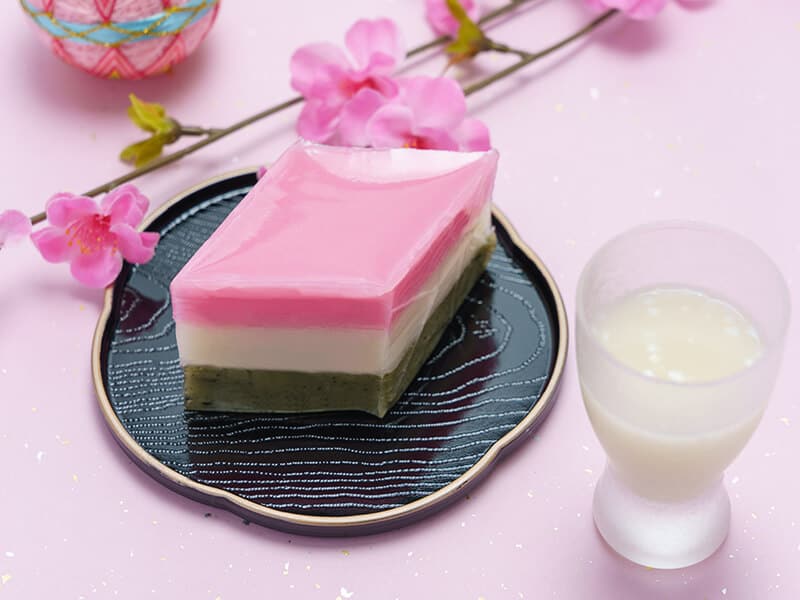
Hishi mochi diamond shape will impress you. The sweetness is its characteristic flavor. It has three layers with three different colors, such as pink, white, and green. This is a traditional cake that symbolizes Girl’s Day.
12. Shio Daifuku
Shio daifuku is famous for its chewy and soft mochi layer accompanied by a delicious red bean paste filling. You can feel the sweetness and saltiness when eating shio daifuku, thanks to its salty filling. Sometimes, black beans are also used in making cakes.
13. Kinako Mochi
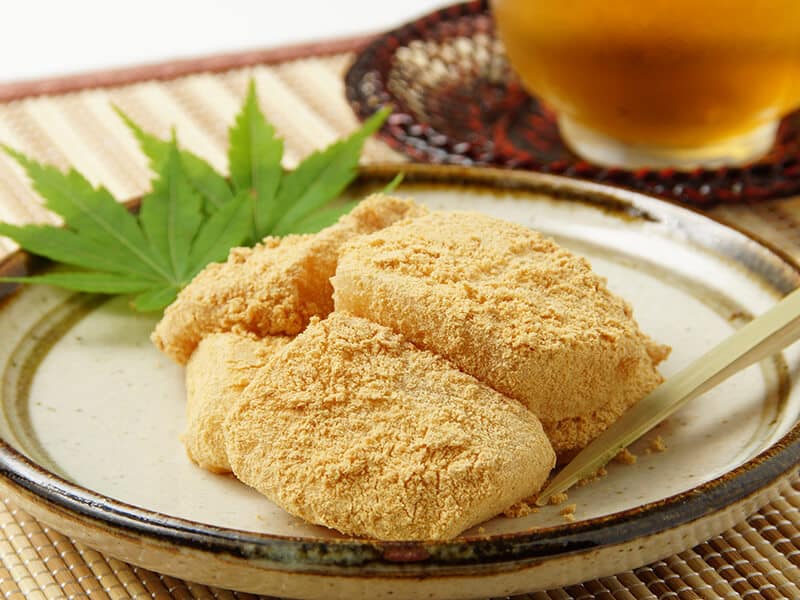
The combination of soybean powder and glutinous rice creates a delicious and wonderful mochi. This type of mochi takes too much time to make. Mochi creates a sweet taste combined with the nutty taste of soybean powder that will stimulate your taste buds.
Do not miss any vital steps to make delicious and attractive Kinako mochi. Watch this video to know more:
14. Ichigo Daifuku (Strawberry Mochi)
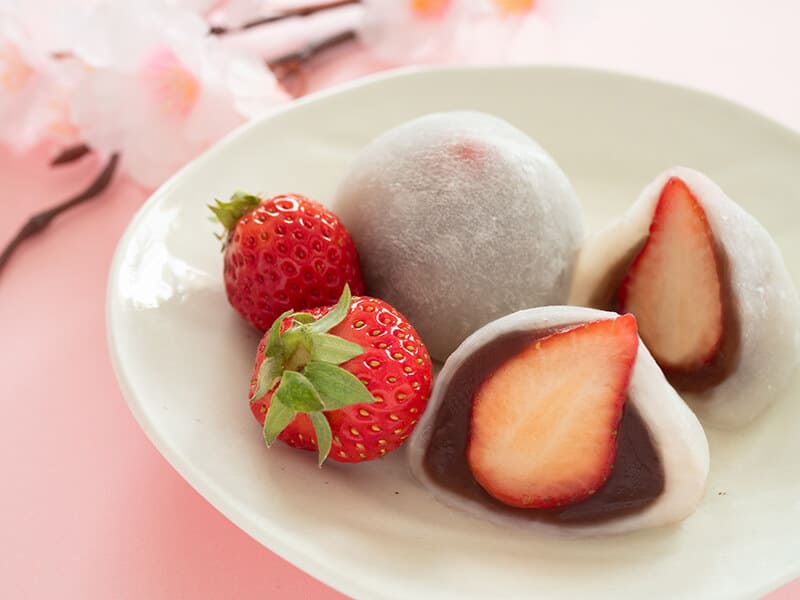
A rather special kind of mochi when their filling is made from fresh strawberries and red bean paste. Fresh and sweet, tart, and juicy flavors are the hallmarks of Ichigo daifuku. The shell is soft and chewy, creating a great feeling when enjoying.
15. Mochi Ice Cream
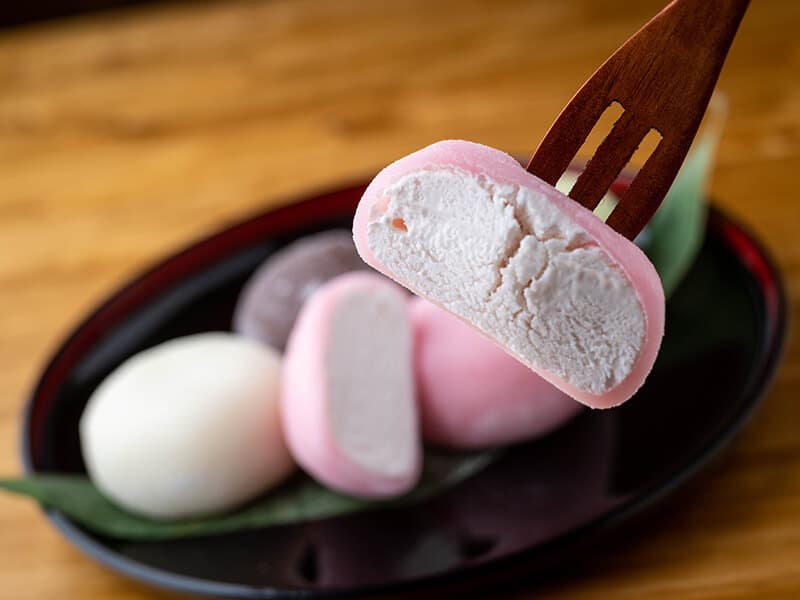
Besides the types of mochi combined with bean paste, mochi ice cream is a special kind. Its creamy inner layer creates a novel feeling and fantastic taste. The sweetness and creaminess of the ice cream will blend with the chewiness and softness of the shell.
Prepare four ingredients and make excellent mochi ice cream right now. Watch this video to know more:
16. Hanabira Mochi
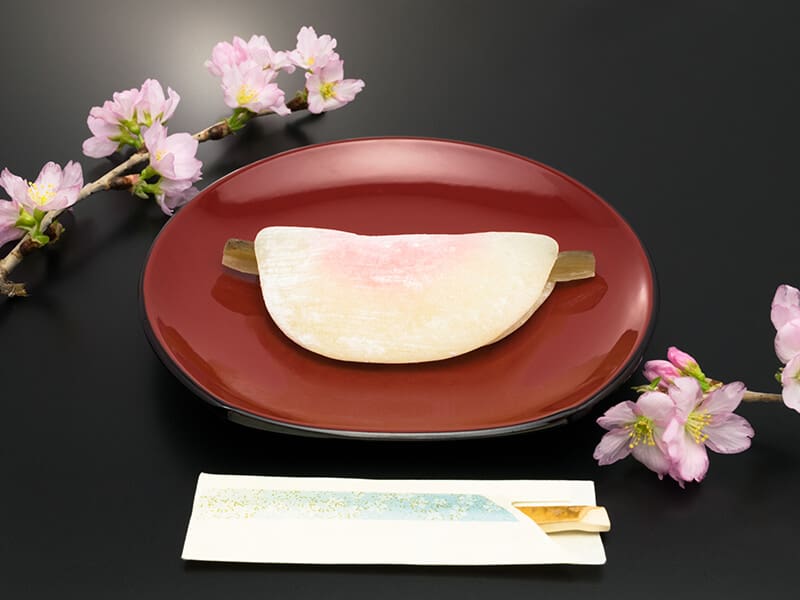
Hanabira mochi is made up of a thin slice of rice cake and a bean paste and burdock root filling inside. You will be impressed with the eye-catching pink color of the filling. Hanabira is eaten at the annual tea ceremony.
17. Mame Daifuku
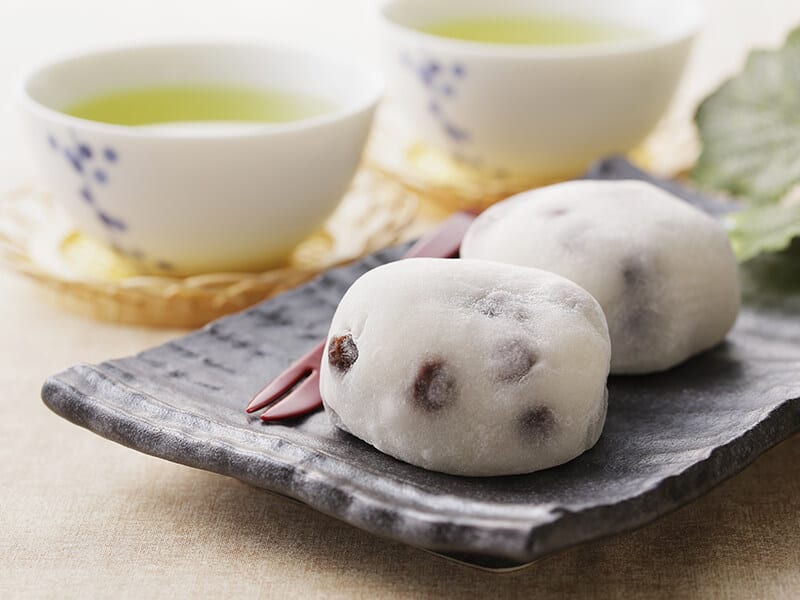
Mame daifuku is a type of rice cake that originated in the Edo period. Sweetness is the dominant flavor of mame daifuku. The filling is a mixture of soybeans, anko, and azuki beans. It is often served when drinking tea.
18. Habutae Mochi
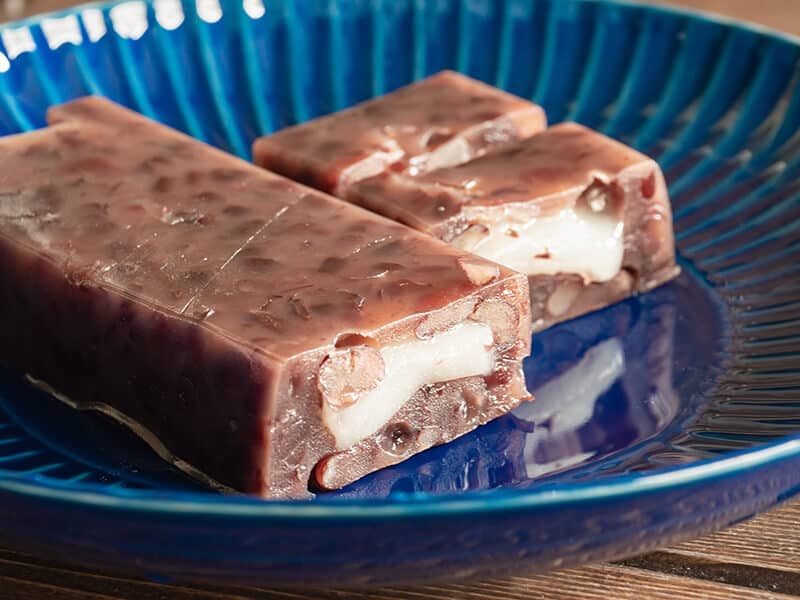
Habutae mochi is a famous and traditional Japanese cake. The dough is made from a mixture of rice powder, syrup, and sugar. This cake has a soft texture. I love the alluring sweetness of this dessert. Habutae mochi is usually white and rectangular in shape.
Consume some famous types of mochi to understand the mochi flavor clearly. Watch this video to know more:
Describe The Process Of Making Mochi

Nowadays, with assistive devices, making mochi has become more accessible. However, preparing mochi with a mortar still brings the most fun and wonderful feeling. The process of making mochi has to go through many steps to create the best quality mochi.
Step 1: The first thing to do to make mochi is to process the rice. Soak mochi rice (mochigome) and leave overnight.
Step 2: After the rice is soaked, it will be put in the pot to steam.
Step 3: An essential step is to pound rice with a mortar (Mochisuki). Rice is put in a mortar, and one person will pound the rice with a pestle; the other will add water to create a sticky and silky texture. This step will determine the quality of the cake.
Step 4: After the dough becomes soft and sticky, it will be rounded into small pieces or shaped according to the preferences of the maker.
Step 5: Cover the pieces of mochi with paper and either freeze them for storage or bake or boil them to eat immediately.
Most Straightforward Directions To Make Mochi At Home
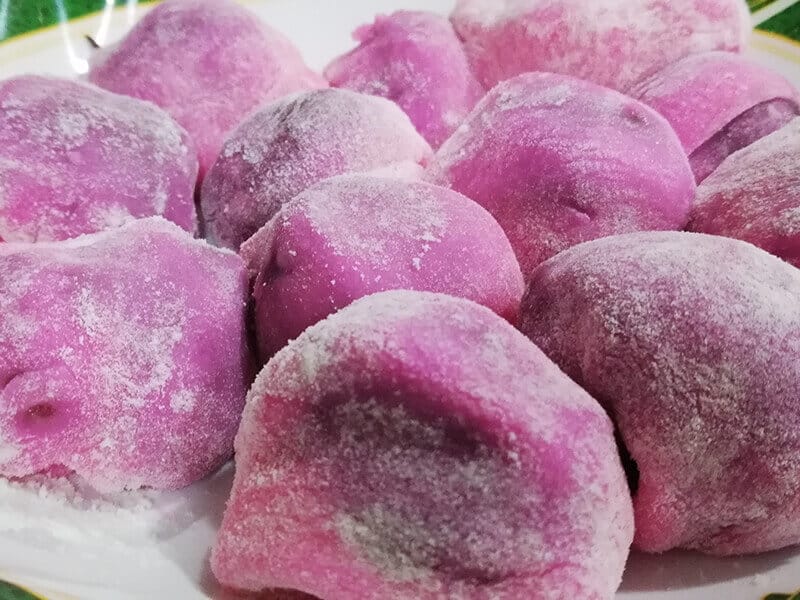
Making mochi at home has become easier as you do not need to spend too much time and effort on pounding rice because rice flour is widely available. So, with only a few simple steps, you can create a fantastic mochi cake.
Step 1: Put the rice flour, salt, and sugar in a bowl.
Step 2: Mix the ingredients together so that they blend into a uniform mixture.
Step 3: Mix and slowly add boiling water. Continue mixing until you get a smooth and sticky texture.
Step 4: Cover the dough with cling film and wait about 5 minutes for the dough to cool.
Step 5: Prepare toppings of fillings, such as red bean paste or ice cream.
Step 6: Start shaping the dough with a small circle and place the filling in the center. Roll into a ball so that the dough entirely covers the filling.
Step 7: Spread the topping on the paper, place the mochi on top, and roll until the topping coats the mochi evenly.
Step 8: Leave the mochi for a short time to soften the mochi.
Step 9: Bring mochi to cook.
Make fantastic and basic mochi with detailed instructions.
The Ultimate Guides To Store Mochi Correctly
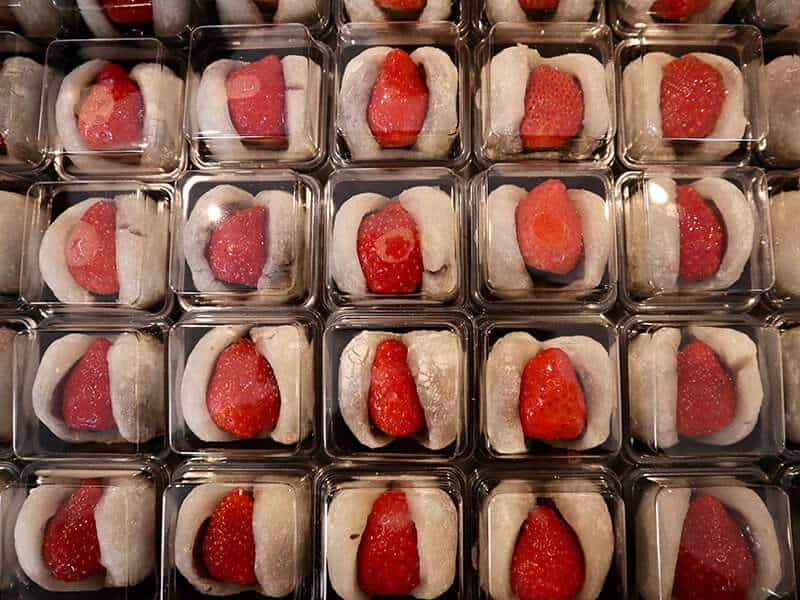
Proper storage of mochi will prolong the shelf life of mochi. There are 3 popular ways to preserve mochi that you can use. The process to preserve mochi in these 3 ways will be revealed below.
1. Storing Mochi In The Pantry
Storing mochi at room temperature is the simplest and most convenient way. However, when stored in this way, the shelf life of mochi should not be extended too long. Please follow the basic steps below.
Step 1: Put the mochi in a container or package.
Step 2: Close the top of the package or container tightly to prevent air from entering.
Step 3: Place the container or package in a dry place to store the mochi.
2. Preserving Mochi In The Refrigerator
You can store it in the refrigerator when you have leftover or unpacked mochi to extend its shelf life. This is a job that does not require much time and complicated equipment. Check the instructions now!
Step 1: Wet the mochi so that it does not stick.
Step 2: Wrap mochi with plastic paper to prevent them from sticking to each other.
Step 3: Place the mochi in the ziploc bag.
Step 4: Close the ziploc bag tightly.
Step 5: Use a towel to wrap the ziploc bag to ensure mochi do not get cold.
Step 6: Put the ziploc bag in the fridge.
3. Freezing Mochi For Longer Shelf Life
Freezing is a convenient method and helps prolong the shelf life of mochi the longest. To freeze mochi, you need to do the steps carefully and precisely to prevent them from sticking together when freezing.
Step 1: Toss the mochi with the potato starch to prevent it from sticking when frozen.
Step 2: Arrange the mochi in rows on the cookie sheet and ensure there is space between them. You should spread a layer of freeze paper so that the mochi does not stick.
Step 3: Place mochi in the freezer.
Step 4: When the mochi is frozen, you should take out the mochi.
Step 5: Pack mochi with plastic wrap.
Step 6: Place the mochi in a freezer or bag container.
Step 7: Seal container or freezer bag.
Step 8: Place the container or freezer bag in the freezer.
The Shelf Life Of Mochi You Need To Know
The shelf life of mochi varies according to how you store them. If you leave homemade fresh mochi in the pantry, they can last about 1 to 2 days. When you keep it in the refrigerator, the shelf life lasts about 1 to 2 weeks.
For mochi purchased from the store, they can last about 2 to 4 days. You can freeze them for about 2 weeks. Once opened, the mochi will last about 7 days in the fridge. The shelf life of dried mochi powder is about 1 year when frozen.
How To Soften Mochi When They Become Hard?
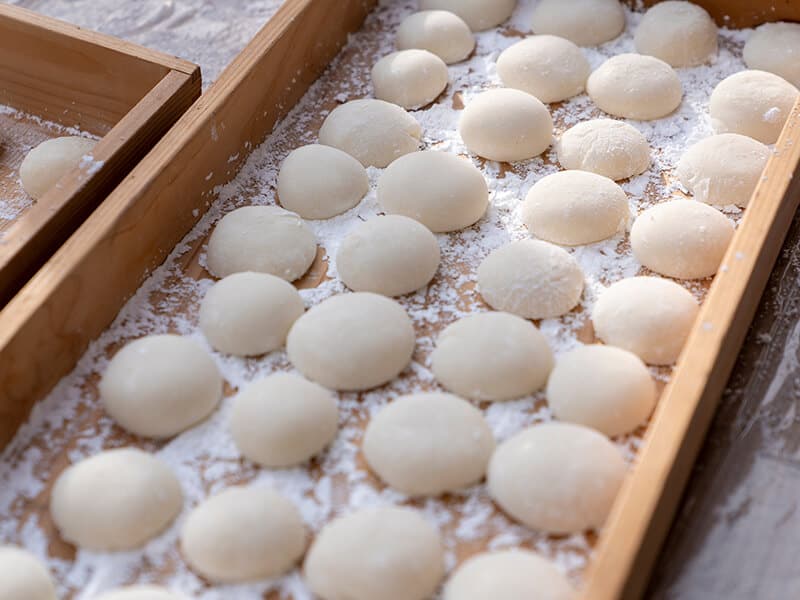
Mochi, when left for a long time or stored in the refrigerator, will become hard. To continue using mochi and enjoy soft mochi, you can apply the following practical methods.
1. Steaming Mochi To Use Immediately
The simplest method to soften mochi is to steam them. Steaming mochi will help retain their shape and texture as well as soften naturally. It is not complicated to implement this straightforward method.
Step 1: Place the mochi on a plate.
Step 2: Prepare a bowl of boiling water or a steamer.
Step 3: Place the mochi plate on the boiling water bowl or steamer.
Step 4: Wait a few minutes for the hot steam to soften the mochi.
Step 5: When the mochi is soft, use them right away.
2. Soften Mochi In The Microwave
Another effective method that you can also apply to soften mochi is to use the microwave. This method is pretty convenient as you just need to turn on the microwave and let it do the work; you just have to wait for the results.
Step 1: Wet the mochi to prevent it from sticking.
Step 2: Place the mochi on a plate and put it in the microwave.
Step 3: Turn on the microwave and wait for about 30 seconds.
Step 4: Check the status of the mochi. If it is already soft, you can take it out and use it.
Step 5: In case the mochi is not yet soft, continue to let it sit for about 30 seconds.
Step 6: Turn off the microwave, and take out the mochi to use. You should not leave the mochi for a long time because it may melt. Note, you should not apply this method with ice cream mochi.
How To Serve Mochi?
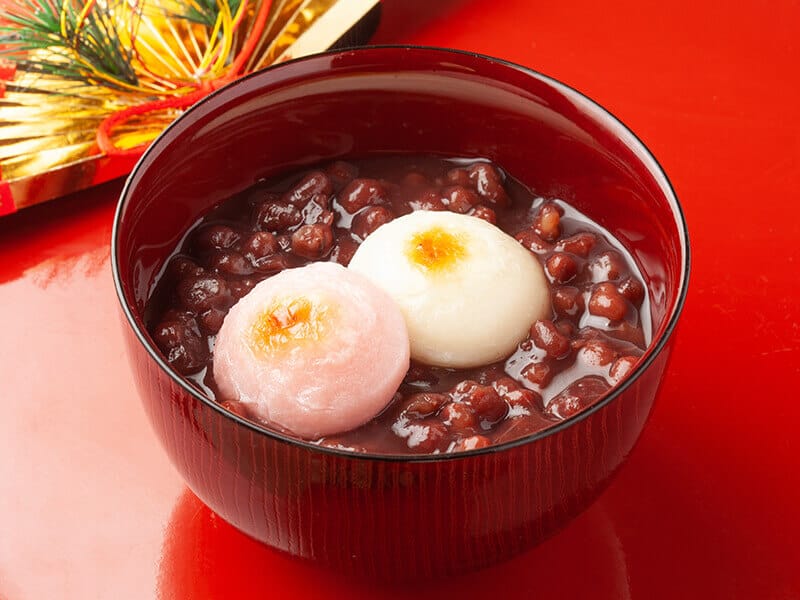
Mochi is a popular dish with many different ways of serving. The softness and chewiness of mochi are suitable for snacking when paired with sweet soy sauce and dried seaweed. Sweet soybean powder will add flavor to the mochi.
You can also easily find mochi in soups. Mochi is also used in hot pot dishes. In addition, the taste of mochi will be a perfect ending to your party when served as a beautiful dessert.
You can make delicious and grease coconut mochi to enjoy. Mochi will become more unique when wrapped with cherry blossom leaves or bamboo leaves. The mochi skewers both bring fantastic flavor and create a new style to this dish.
FAQs
Other useful information about the taste of mochi will be summarized and brought to you when answering the following questions on this topic.
Summary Content About The Taste Of Mochi
If you have a chance to come to Japan, you should try to enjoy mochi to feel more authentic. You can also apply the instructions on making mochi in this article to make mochi at home for your family and friends.
Enjoying a Japanese rice cake at the end of the party will leave a sweet and impressive aftertaste. I wish I could get more contributed ideas about the taste of mochi. It is nice to get a share and like from you.
References
- En.wikipedia.org.. Yatsuhashi – Wikipedia.
- Hormonal control of salt and water balance in vertebrates. (2006, May 15).


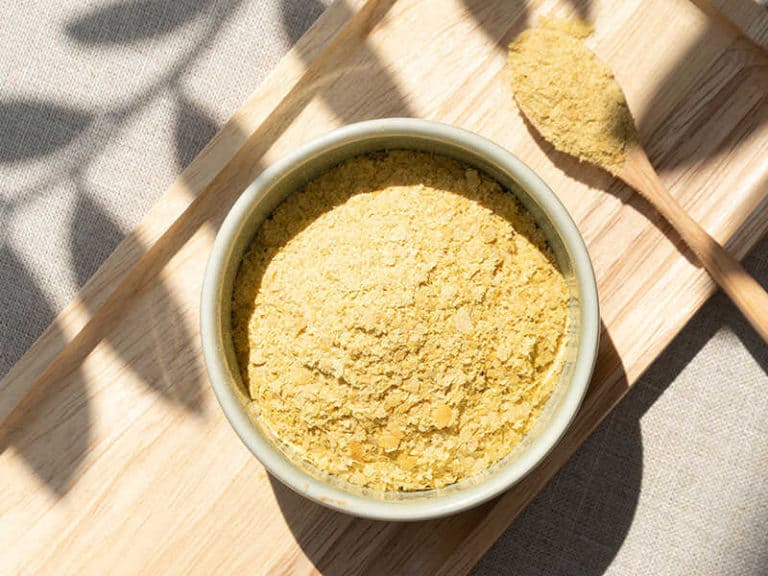



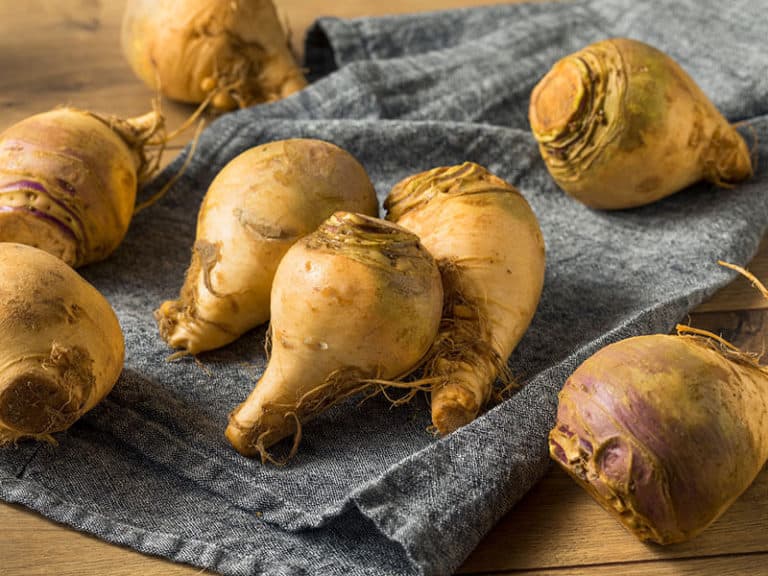
Amanda Collins
Founder and Senior Culinary Editor
Expertise
Culinary Arts and Management, Food Journalism and Critique, Recipe Development and Testing, Global Culinary Traditions, Sustainable Food Practices
Education
Institute of Culinary Education (ICE), New York, NY
Program: Diploma in Culinary Arts
Focus: Intensive hands-on training in culinary techniques, recipe development, and kitchen management, preparing students for professional roles in the culinary industry.
Monroe College, New Rochelle, NY
Program: Associate in Applied Science in Culinary Arts
Focus: Practical culinary skills, including cooking techniques, menu planning, and kitchen operations, with an emphasis on hands-on experience and industry standards.
Amanda Collins is a seasoned chef and food editor with a deep love for global flavors. Trained at the Institute of Culinary Education and Monroe College, and with over 15 years in the culinary field, Amanda has refined her skills in kitchens worldwide. Her background in food studies gives her a unique ability to share both recipes and the cultural stories that shape them.
As senior culinary editor at thebreslin.com, Amanda’s work brings authentic dishes to life, inviting readers to explore new flavors and techniques from around the globe. Her approachable style makes it easy for anyone to bring a bit of the world’s cuisine into their kitchen.